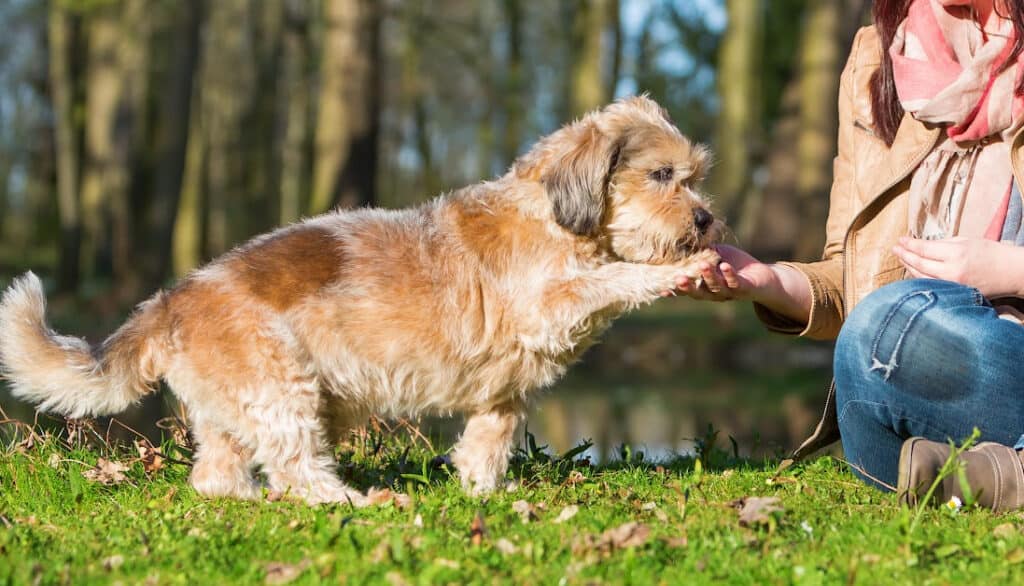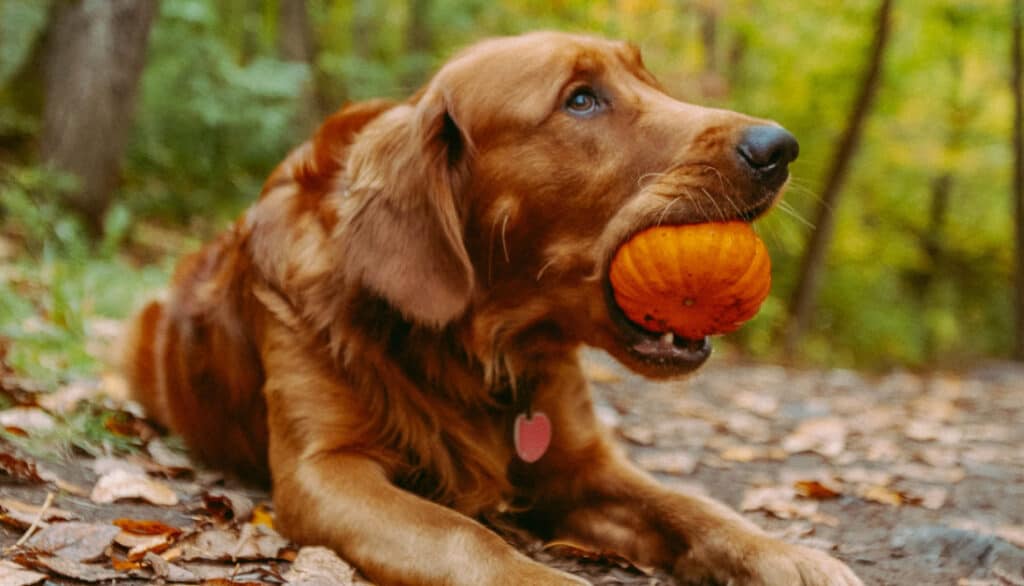Welcome fellow dog-lovers and responsible pet parents! Have you ever found yourself in the kitchen, preparing a meal or snack, and you see those big, pleading eyes of your fur-baby staring up at you? In that moment, it’s natural to wonder: Can I share some of this with them? Are olives toxic to dogs? The short answer is no, olives are not toxic to dogs.
One such food item that often stirs up curiosity is olives. They’re a staple in many kitchens and diets around the globe due to their unique flavor and well-known health benefits. But are these small, nutritious fruits safe for our four-legged companions?
The purpose of this blog post is to delve deep into this topic, provide essential information for dog owners, and clear up any confusion. We’ll explore the world of canine nutrition, the potential health benefits and risks of olives for dogs, and when it might be necessary to consult a vet. By the end of this article, you’ll be well-equipped to make informed decisions about your pet’s diet, specifically regarding olives. So, let’s get started! After all, the safety and well-being of our beloved pets are always top priority.

Understanding Canine Nutrition
Understanding canine nutrition is a crucial part of being a responsible dog owner. Dogs aren’t just pets; they’re family. And just like any member of the family, their health and well-being are paramount. Proper nutrition is a cornerstone of that health, so let’s take a moment to unpack what that entails.
At its most basic, a dog’s diet should provide the right balance of nutrients to support all bodily functions. This includes proteins, carbohydrates, fats, vitamins, and minerals, each playing its unique role in keeping our dogs healthy.
Protein is essential for building and maintaining muscles and tissues, while carbohydrates provide them with the energy they need for their playful antics and everyday activities. Fats, often overlooked, are crucial for maintaining healthy skin and a shiny coat, not to mention supporting brain development and overall cellular function.
Vitamins and minerals, though required in smaller amounts, are no less important. They aid in a plethora of functions from bone health to immune support.
But here’s the catch: not all foods that provide these nutrients for humans are safe for dogs. Some foods we enjoy can be harmful, or even toxic, to our canine companions.
That’s why it’s important to not only understand what nutrients our dogs need, but also where they can safely get those nutrients from. And that brings us to our key topic: olives. Are they a tasty treat for Rover, or a no-go area? Keep reading as we delve deeper into this question.

Olives and Dogs
Let’s shift gears now and talk about olives, those small but mighty fruits often found on pizza, in salads, or in a glass of martini, and their relationship with dogs.
Olives, for those who may not be aware, are small, oval-shaped fruits grown on the Olea europaea tree. They’re typically harvested in the green to purple stage and are known for their unique, somewhat bitter flavor. The olive tree is a classic part of Mediterranean landscapes, but its culinary and health influence stretches far beyond that region.
In terms of nutrition, olives are packed with several beneficial components. They are rich in healthy monounsaturated fats, vitamin E, and other powerful antioxidants. They’re also a source of iron, calcium, and dietary fiber. This nutrient composition makes olives a great part of a balanced human diet. But what about our dogs?
We all love sharing a bite of our food with our furry friends, but we need to make sure it’s safe for them first. The question stands: Can our dogs partake in the consumption of olives? And if they can, are there any benefits to them, or could there potentially be risks involved?
Well, let’s plunge into the specifics and understand if and how dogs can eat olives, the potential health benefits, and any risks you should be aware of. So sit tight, pet parents, we’re about to delve into some fascinating and important details!

Can Dogs Eat Olives?
Alright, let’s cut to the chase: Can dogs eat olives? The short answer is yes – but with some key caveats. It’s not a simple ‘yes’ or ‘no’ question because, while olives themselves aren’t toxic to dogs, there are certain factors and conditions that need to be taken into account.
Firstly, if you’re planning on sharing olives with your dog, they should always be pitted. Olive pits can pose a choking hazard or, if swallowed, can obstruct a dog’s intestinal tract. Either scenario can become a serious, life-threatening situation for your dog.
Secondly, while the olive fruit itself is safe for dogs to consume, many of the olives we buy in stores are not. That’s because they’re often preserved in brine, which contains large amounts of salt. Too much sodium can be harmful to dogs, leading to symptoms like excessive thirst or urination, vomiting, and even seizures in severe cases.
Plain, fresh olives are the best option if you want to let your dog have a taste. However, even then, moderation is crucial. Dogs are much smaller than us, and their bodies process food differently. Therefore, what might be a small amount for us can be excessive for them.
So, yes, dogs can eat olives – provided they are fresh, pitted, and given in moderation. But what about the potential health benefits or risks that come along with these tasty morsels? Let’s explore that next.

Potential Health Benefits of Olives for Dogs
So, now that we’ve established that dogs can, indeed, eat olives (provided they are pitted and not soaked in salty brine), let’s explore the potential health benefits these little fruits might offer to our canine companions.
Like humans, dogs can benefit from the nutritious elements found in olives. First and foremost, olives are rich in monounsaturated fats. These ‘healthy fats’ are known to support cardiovascular health. For older dogs or breeds prone to heart conditions, this can be a minor but beneficial addition to their diet.
Furthermore, olives are packed with antioxidants, including vitamin E and polyphenols. These compounds help to combat oxidative stress in the body, which can contribute to aging and disease. Antioxidants also support the immune system and can promote skin health, potentially resulting in a shinier, healthier coat for your dog.
Additionally, the fiber content in olives can support digestive health by promoting regular bowel movements and potentially aiding in weight management. However, it’s essential to remember that the fiber content in a few olives is quite low, so don’t expect miracles from this alone!
Though the health benefits of olives can sound appealing, remember that they should only form a small part of your dog’s diet. Olives are not a replacement for a balanced, nutritious dog food that’s designed to meet all of your dog’s nutritional needs. And as always, moderation is key.
Up next, we’ll tackle the potential risks of olives for dogs – because it’s important to understand both sides of the coin when it comes to feeding our furry friends.

Potential Risks of Olives for Dogs
Now that we’ve looked into the possible health benefits of olives for dogs, it’s time to address the potential risks. While olives are not inherently toxic to dogs, there are several circumstances where they could pose a danger. As loving pet parents, it’s our responsibility to be aware of these risks to ensure our fur babies remain safe and healthy.
First and foremost, olive pits can pose a significant threat. They’re hard and can be difficult for dogs to chew properly. If swallowed whole, there’s a risk of choking, and the pits can potentially obstruct the digestive tract. For these reasons, always make sure to remove the pit before offering your dog an olive.
Another potential risk comes from olives that have been preserved in brine or marinades. These are typically high in sodium, which can be dangerous for dogs. While dogs do need some sodium in their diets, too much can lead to salt poisoning. Symptoms can include vomiting, diarrhea, excessive thirst or urination, tremors, and, in severe cases, seizures. To be safe, always opt for fresh, plain olives when sharing with your pup.
Lastly, like any food, there’s a possibility that your dog might be allergic to olives. While not common, allergic reactions can occur with any food type. If it’s your dog’s first time eating olives, watch for symptoms like itching, swelling, difficulty breathing, or other signs of discomfort. If you notice anything unusual, stop feeding them olives and consult a veterinarian immediately.
So, while olives can be a healthy treat for dogs, there are potential risks to be mindful of. But don’t worry! Up next, we’ll discuss signs that may indicate you should consult a vet, followed by tips on how to safely introduce olives into your dog’s diet.

When to Consult a Vet
Knowing when to consult a vet is crucial in maintaining the health of our furry friends. While olives, in general, are safe for dogs to consume, there can be situations where a visit to the vet becomes necessary. Being vigilant about your pet’s behavior and reactions after trying a new food, such as olives, can go a long way in ensuring their health and well-being.
If your dog accidentally consumes a large number of olives, especially ones that are pitted or brined, you should contact your vet immediately. As we discussed, olive pits can cause blockages in your dog’s digestive system, and the high sodium content from brined olives can potentially lead to salt poisoning.
Observe your dog closely for any changes in their behavior or physical condition. Symptoms like excessive thirst or urination, vomiting, diarrhea, or decreased appetite can indicate a potential issue. In addition, be on the lookout for signs of a potential allergic reaction, which might include swelling, excessive itching, redness, hives, or difficulty breathing.
It’s important to remember that each dog is unique and may react differently to new foods. While one dog may consume olives without any issue, another may experience discomfort or adverse reactions. When in doubt, always consult a vet.
Our next topic will provide you with some tips on how to safely give olives to your dogs. Because while it’s good to know what to do in case of an emergency, it’s even better to avoid such situations in the first place by introducing new foods in a safe and responsible manner. Stay tuned!

How to Safely Give Olives to Your Dogs
Alright, pet parents! Now that we’ve covered the potential benefits and risks of giving olives to dogs, let’s talk about how to do it safely. Because while sharing food with our furry friends can be a joyous experience, their health and safety always come first.
The golden rule is: moderation is key. Olives, while generally safe, should be given to dogs in small amounts and not as a regular part of their diet. They’re best used as an occasional treat, not a meal replacement.
Before you give your dog an olive, ensure it is pitted. The pits can pose a choking hazard or cause an obstruction in your dog’s digestive system. It’s best to avoid these risks entirely by only offering pitted olives.
Opt for fresh, plain olives whenever possible. Many olives found in stores are preserved in brine or marinated with spices, both of which can be harmful to dogs. Brine has a high salt content that can lead to salt poisoning, while spices and flavorings can upset your dog’s stomach or worse.
When first introducing olives, start with a small amount to see how your dog reacts. Just like humans, dogs can have individual food preferences and sensitivities. Your dog might not even like olives, or they might have a mild reaction to them. Keep a close eye on your dog for any signs of discomfort or distress, and if you notice anything unusual, consult your vet.
Lastly, always consult with your vet before making significant changes to your dog’s diet, including introducing new foods like olives. They can provide guidance based on your dog’s health history and specific needs.

Alternatives to Olives for Dogs
If your dog isn’t particularly fond of olives or you simply want to spice up their treat options, there’s a whole pantry of healthy alternatives waiting to be explored. The key is to ensure safety and nutrition are always your top priorities when adding variety to your pet’s diet.
Here are some wonderful alternatives that your dog might enjoy:
- Crunchy vegetables: If your dog appreciates the satisfying crunch of olives, they might enjoy fresh veggies like carrots and cucumbers. Besides offering a similar texture, these vegetables are nutritionally rich. For instance, carrots are packed with beta-carotene, which is beneficial for eye health.
- Fruity delights: For a sweet treat, consider blueberries or apple slices (remember to remove the seeds). These fruits are not only flavorful but also chock-full of vitamins and antioxidants.
- Rich in healthy fats: If it’s the healthy fats in olives that you’re looking to replicate, a bit of cooked salmon or a sprinkle of flaxseeds can do the trick. Both are excellent sources of Omega-3 fatty acids, which are fantastic for your dog’s skin and coat health.
- Pumpkin: This is another versatile option that’s gentle on the stomach and aids digestive health. Serve it cooked and pureed, and remember to skip any seasonings.
However, when introducing these new foods to your dog, always keep in mind these crucial guidelines:
- Introduce new foods gradually and in moderation.
- Always remove any seeds, pits, or inedible parts from the food.
- Steer clear of any foods known to be toxic to dogs.
By adhering to these rules and keeping your pet’s preferences in mind, you can ensure a varied and delightful treat time for your canine companion.

Conclusion
As we wrap up this journey through the world of olives and canine nutrition, it’s clear that the relationship between dogs and human foods can be a complex one. While we’ve discovered that olives, in and of themselves, are not toxic to dogs, it’s equally clear that not all olives are created equal in terms of safety for our furry friends.
Fresh, pitted olives can be a safe treat for dogs, offering beneficial monounsaturated fats, fiber, and antioxidants. However, we must steer clear of olives preserved in brine or those with pits, as they pose potential health risks. Moderation is paramount when giving olives to dogs, as with any treat, and it’s always wise to consult with a vet when introducing any new food into your dog’s diet.
For those dogs who don’t take to olives or pet parents seeking variety, we’ve explored several safe and healthy alternatives. From crunchy carrots to juicy blueberries, the options are plentiful, ensuring that treat time can remain a joyous and bonding experience for both you and your pet.
Being a pet parent is a journey filled with love, companionship, and sometimes, a fair share of questions and concerns. Hopefully, this guide has provided useful insight into one small facet of your dog’s diet and overall well-being.
Remember, every dog is unique, and what works for one might not work for another. Stay observant, stay informed, and continue to cherish the delightful companionship that your pet offers. After all, our furry friends depend on us to make the best choices for them. Here’s to many more happy, healthy snack times with your four-legged friend!
~Lindsie
